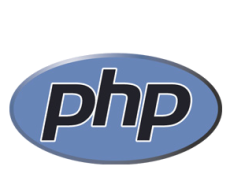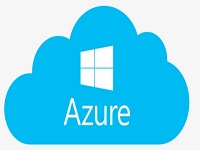IT Skills
Educating students for success in the changing worldOur Corporate Training Program
.Net
Course Content
- HTML ,CSS
- C#
- NET Core
- MVC framework
- SQL Server

PHP
Course Content
- HTML , CSS
- Javascript , JQuery
- Bootstrap
- Core PHP
- My SQL
- Laravel
- WordPress
IT Infrastructure
Course Content
- Hardware (A+)
- Neworking(N+)
- CCNA
- MCSA
- Linux
- Ticketing Tool
- AWS

Microsoft Azure
Course Content
- Introduction to cloud
- Microsoft Azure basics
- Deploying and configuring infrastructure
- Introduction to Azure
- Virtual network and service
- Microsoft azure storage
- Implement an azure active directory
- Azure SQL database
- Azure web apps
- Azure backup and site recovery

Cloud Computing Syllabus
Course Content
- Definition of cloud computing.
- Categorization of the various service types.
- Drivers of Cloud Solutions.
- Handling cloud security.
- Business Demands.
- Deployment of software solutions and web applications.
- Exploring Platform as a Service (PaaS)
- Evaluating the architecture.

Cyber Security Program
Ethical Hacking
Module 01 – Introduction to Basics of Ethical Hacking
Module 02 –Foot-printing Active (Tool Based Practical)
Module 03 – Foot-printing Passive (Passive Approach)
Module 04 – In-depth Network Scanning
Module 05 – Enumeration User Identification
Module 06 – System Hacking Password Cracking & Bypassing
Module 07 – Viruses and Worms
Module 08 – Trojan and Back door
Module 09 – Bots and Botnets
Module 10 – Sniffers MITM with Kali
Module 11 – Sniffers MITM with Windows
Module 12 – Social Engineering Techniques Theoretical Approach
Module 13 – Social Engineering Toolkit Practical Based Approach
Module 14 – Denial of Service DOS & DDOS Attacks
Module 15 – Web Session Hijacking
Module 16 – SQL Injection Manual Testing
Module 17 – SQL Injection Automated Tool Based Testing
Module 18 – Basics of Web App Security
Module 19 – Hacking Webservers Server Rooting
Module 20 – Hacking Wireless Networks Manual CLI Based
Module 21 – Hacking Wireless Network
Module 22 – Evading IDS, Firewall
Module 23 – Honey pots
Module 24 – Buffer Overflow
Module 25 – Cryptography
Module 26 – Penetration Testing: Basics
Module 27 – Mobile Hacking
Module 28 – Internet of Things (IoT) Hacking
Module 29 – Cloud Security
Cyber Forensics
Module 1: Introduction to Computer Forensics
Module 2: Computer Forensics Investigation Process
Module 3: Understanding Hard Disks and File Systems
Module 4: Data Acquisition and Duplication
Module 5: Defeating Anti-forensics Techniques
Module 6: Operating System Forensics
Module 7: Network Forensics
Module 8: Investigating Web Attacks
Module 9: Database Forensics
Module 10: Cloud Forensics
Module 11: Malware Forensics
Module 12: Investigating Email Crimes
Module 13: Mobile Forensics
Module 15: Forensic Report Writing and Presentation
Web Security
Module 01: Introduction to WAPT
Module 02: Website Reconnaissance and Foot printing
Module 03: Vulnerability Analysis
Module 04: Scanning or crawling website using Automated Tools
Module 05: Wordlist Generation for Intrusion and Cracking
Module 06: Encryption and Hash Cracking
Module 07: Introduction to Metasploit
Module 08: Exploit Search and Payload Generation
Module 09: Attacking HTTP Basic Authentication with Nmap and Metasploit
Module 10: Input Validation techniques
Module 11: Blacklist VS. Whitelist Input Validation Bypassing
Module 12: Encoding Attacks
Module 13: Directory Traversal Vulnerability (Directories and Files)
Module 14: Automated Attack for Directory traversal
Module 15: Session fixation
Module 16: Session Management – Using URL Manipulation
Module 17: Session Management – Using Cookie Manipulation
Module 18: URL Encoding and Path Traversal Vulnerability
Many more…Penetration Testing
Module 01: Introduction
Module 02: In-Depth Scanning
Module 03: Exploitation
Module 04: Command Line Fun
Module 05: Getting Comfortable with Kali Linux
Module 06: Bash Scripting
Module 07: Practical Tools
Module 08: Active Information Gathering
Module 09: Passive Information Gathering
Module 10: Introduction to Buffer Overflows
Module 11: Buffer Overflows
Module 12: Fixing Exploits
Module 13: Locating Public Exploits
Module 14: Antivirus Evasion
Module 15: File Transfers
Module 16: Windows Privilege Escalation
Module 17: Linux Privilege Escalation
Module 18: Password Attacks
Module 19: Port Redirection and Tunneling
Module 20: Active Directory Attacks
Module 21: Power Shell Empire
Module 22: Trying Harder: The Labs
Module 23: Penetration Test Breakdown

AWS
Course Content
- Introduction – of AWS
- Getting started – AWS certified solutions Architect Associate
- Understanding Regions and Availability Zones
- Getting started with AWS virtual server – EC2 service and EC2 instances
- Take care of Billing in the Cloud
- Load Balancing solutions in AWS – Elastic Load Balancing
- Designing solution with EC2 and ELB for AWS Architects
- Getting started with AWS Elastic Beanstalk
- Getting Started with container Solutions in AWS –ECS
- Architect Serverless solution with AWS Lambdas and API Gateway
- Architect Your private networking solution in AWS with VPC and subnet
- Getting started with Amazon S3 object storage in AWS
- Getting started with IAM Management in AWS
- Data Encryption solution in AWS – KMS and cloud HSM
- Block Storage Solution in AWS EBS and Instance store
- SQL database in AWS – DynamoDB
- Exploring AWS cloudTrail, CloudWatch and config
- Architect Asynchronous communication solutions in AWS with SQS, SNS and MQ
- Architect Solution for content Distribution with Amazon cloud front
- Getting started with Route 53 – AWS domain registrar and DNS
- Switching to Architecture mode – AWS Certified Solution Architect Associate
- Architect simplified big data solution with AWS Data lakes
- Streaming solution Amazon kinesis data streams, data firehose and analytics.